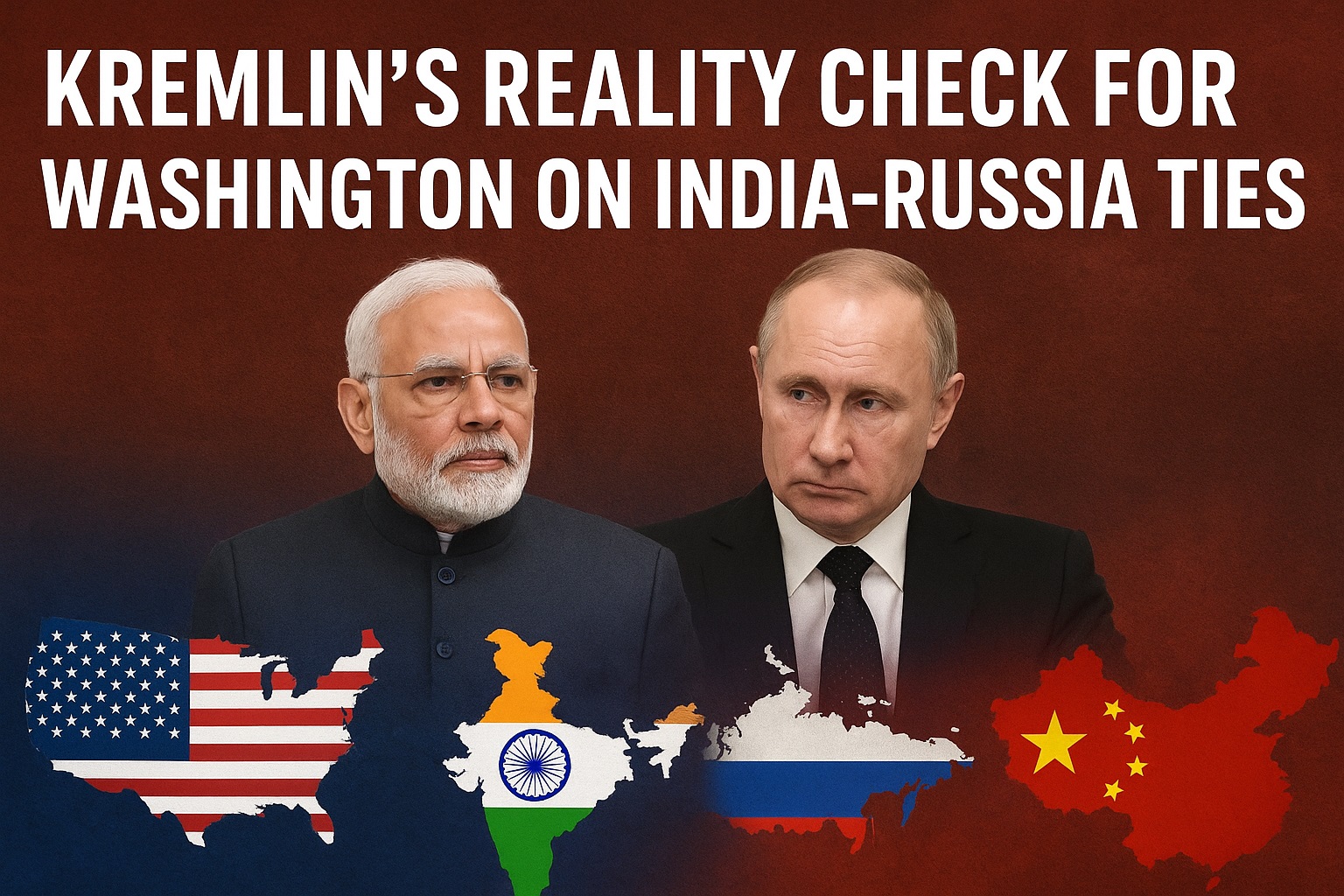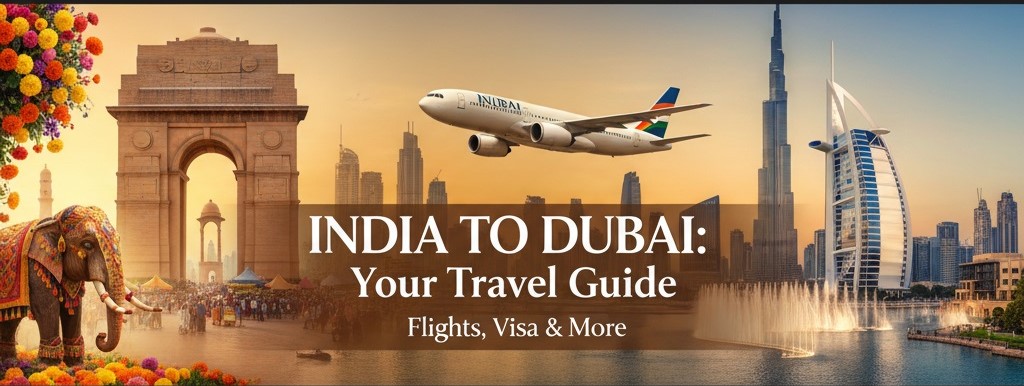In recent weeks, tensions between Washington and New Delhi have escalated—chiefly over India’s increasing energy ties with Russia, and Washington’s aggressive response via punitive tariffs. Meanwhile, Moscow seems increasingly confident in its relationship with India, and is sending a message: alliances are shifting, strategic autonomy matters, and economic leverage can no longer be taken for granted. For readers in the United States, United Kingdom, and China, the unfolding India-Russia dynamic is not just India’s story—it’s a test of power, diplomacy, and global order.
This blog explores:
- What exactly the “reality check” from the Kremlin entails;
- Why this matters to Washington, London, and Beijing;
- What India is signaling;
- The broader implications for global geopolitics; and
- Possible directions ahead.
1. What the “Reality Check” Is
Recent press from multiple sources reveals several core elements of Moscow’s strategic posture toward India, in response to U.S. pressure:
- Tariffs from Washington: The United States under the Trump administration has imposed steep tariffs on Indian Imports—up to 50%—as a reaction to India’s import of discounted Russian oil. The U.S. claims that these purchases help Moscow fund the war in Ukraine.
- India’s increasing dependence on Russian energy: India currently gets about 35% of its oil from Russia—up dramatically from near-zero before February 2022. Moscow offers Russia-origin oil at discounts (5-7%), and has put in place payment mechanisms (e.g., rupee payments) that help bypass some of the constraints caused by western sanctions. Reuters
- Resilience in India-Russia bilateral relations: Leaders Modi and Putin have publicly reaffirmed their “special and privileged” relationship during meetings such as the Shanghai Cooperation Organisation (SCO) summit in Tianjin.
- Moscow pushing for multilateral formats that include India and China: Russia is seeking trilateral cooperation with India and China, pushing ideas such as a “Greater Eurasian Partnership.” The Kremlin appears confident that India will sustain its purchases, even under U.S. pressure.
- India’s response: New Delhi claims that its energy imports from Russia are essential for its massive population and energy needs. It also argues that Washington’s decision to single India out (as opposed to other large consumers of Russian oil) is “unfortunate.” Moreover, Indian leadership insists on strategic autonomy and multialignment, refusing to be pulled into a binary worldview.
Together, these points form what could be called the Kremlin’s reality check: that economic penalties from Washington will not easily force India to abandon its Russia ties; that discount energy and payment mechanisms reduce U.S. leverage; and that India is capable and willing to assert its own strategic calculus.

2. Why This Matters to Washington, London, and Beijing
Washington (USA)
- Credibility of sanctions & foreign policy: The U.S. strategy of using tariffs and sanctions to change behavior is being tested. If these tools fail to push India away from Russia, it raises questions about how effective such leverage is, especially when dealing with populous, energy-hungry democracies.
- Trade and economic consequences: U.S. tariffs will affect not just diplomatic posturing but concrete trade flows. American exporters—especially those in agriculture, dairy, other sensitive sectors—risk losing market access or being targeted reciprocally. Moreover, the U.S. has to balance national security/foreign policy goals with being seen as fair and consistent.
- Geostrategic alignment: The U.S. sees India as a potential counterweight to China in Asia. But pushing India too hard risks pushing it closer to Russia and China—not just in optics but in actual cooperation. This could weaken the U.S. position in Asia and for global supply chains, energy markets, and defense partnerships.
- Domestic politics: With American political cycles always looming, public perception matters. Accusations that Washington is being unfair or targeting an ally could backfire politically.
London (UK)
- Historical ties and diplomacy: As a traditionally close U.S. ally, the UK must decide whether to align with Washington’s position or view India’s stance with more nuance. The UK also has its own diplomatic and trade ambitions in South Asia which may clash with blanket alignment with U.S. pressure.
- Energy / Trade interdependence: Global energy markets are interconnected. Any disruption (e.g. due to tariffs or counter-measures) can ripple into European energy prices, supply chains, inflation. The UK must monitor ripple effects.
- Multilateral diplomacy in Europe: With the EU, NATO, etc., there’s pressure for unified approaches to Russia’s war in Ukraine. The UK, being one of the vocal critics of Moscow, has to balance its stance with potential fractures among partners.
Beijing (China)
China watches this situation with keen interest, for several reasons:
- Shared interests: China already is a major buyer of Russian oil. The mechanisms India builds (discounts, rupee payments, alternate trade channels) could also benefit China—or inspire better terms.
- Geopolitical positioning: India moving closer to Russia (or resisting U.S. pressure) helps China in forming a more multipolar world order, where U.S. hegemony is less absolute. India’s multialignment is preferable to Beijing over a binary bloc scenario.
- Strategic rivalry and cooperation: India-China border tensions remain unresolved. Any warming of India-China or India-Russia-China trilateral coordination (especially economically or strategically) could shift the balance in Asia.
- Economic opportunity: Shared trade, infrastructure, and energy projects could be expanded in a framework less dominated by Western rules/standards. Beijing may see opportunity in joining some of India’s arrangements or fostering parallel ones.
3. What India Is Signaling
India is laying out a set of clear signals in its behavior, rhetoric, and diplomacy.
- Strategic autonomy over alignment: India is insisting on its sovereign right to choose energy sources, trade partners, and strategic friendships. It is resisting being forced into a binary choice between Moscow and Washington.
- Energy security is non-negotiable: With its large population, growing energy demand, geopolitical vulnerabilities, and domestic needs, India argues that discounted Russian oil helps maintain both economic stability (lower fuel costs, inflation control) and energy reliability.
- Multidimensional diplomacy, not confrontation: India is not attacking the U.S., but it is pushing back diplomatically, using forums like SCO, and keeping doors open with Washington. The idea is to maintain relationships across multiple axes.
- Leverage creation: India is extracting concessions or better terms—for example paying in rupees, getting discounts, building trust with Russia in other sectors. This increases its bargaining position.
- Economic pragmatism: India is aware that long-term relationships (trade, investments, defense cooperation) matter. It is not simply making ideological alliances, but pragmatic ones.
4. Broader Implications for Global Geopolitics
This isn’t just a U.S. vs India vs Russia story. There are several wider ripples worth noting.
- Erosion of U.S. sanctions effectiveness: If India can sustain energy imports from Russia despite U.S. sanctions and unilateral tariffs, monetary tools lose some potency. Other countries may feel emboldened to carry on trade with Russia or other states under sanction, reducing global governance effectiveness in certain contexts.
- Shift toward alternate payment systems & currencies: The use of rupees, barter, or other national currencies (or regional currencies) could reduce dollar reliance, especially in energy markets. India and Russia already moving in that direction shows that the existing system may be more fragile than presumed.
- Re-balancing of alliances: Multilateralism is being redefined. Forums such as SCO, BRICS, “Greater Eurasia” are becoming more consequential—places where U.S. influence is limited. China, India, and Russia (and possibly others) may deepen cooperation, which could reshape regional orders in Asia, Central Asia, and elsewhere.
- Energy markets volatility: Because energy is central to this dispute, prices, supply chains, refining and shipping are all vulnerable. Disruptions from sanctions, or shifts in demand, may affect global inflation, trade balances, and energy security.
- Trade wars & protectionism resurgence: Washington’s tariffs on India are part of a larger trend: using trade tools for geopolitical ends. If more countries adopt similar stances, global trade norms may be under strain, with increased fragmentation of trade blocs.
- Diplomatic balancing acts for other countries: Nations caught between U.S. pressure and relations with Russia or China will have to make complex strategic decisions—balancing values, strategic interests, and economic imperatives.
5. Possible Futures / What Comes Next
What might happen going forward? Here are scenarios and what to watch:
| Scenario | What Might Lead To It | Implications |
|---|---|---|
| India maintains current course | Continue discounted Russian oil imports, keep receiving Russian discounts/payment methods; resist U.S. pressure through diplomatic channels. | U.S. tariffs stay; perhaps more counter-measures. Closer India-Russia cooperation. India may also lean more toward Russia & China in international fora. Washington might recalibrate expectations, or seek compromises. |
| Escalation with Washington | U.S. further increases tariffs, possibly imposes sanctions; diplomatic pressure; U.S. partners (UK, EU) join Washington in pressuring India. | Could cause trade disruptions, retaliation, a fracture in U.S.-India relationship. Might accelerate India’s pivot eastward. Could affect U.S. access in Indo-Pacific strategy. |
| Partial compromise or adjustment | India could agree to reduce some Russian oil purchases, improve transparency, or find alternative suppliers, in exchange for relief or negotiation. Washington could offer incentives (trade deals, technology partnership, strategic cooperation). | Mutually face-saving adjustments. Could stabilize relations and prevent a full drift. But trust issues may remain. |
| Deeper trilateral/multilateral alliances | Russia pushes India & China to formalize strategic/trade alliances; energy deals between India-Russia deepen; China sees benefit and intensifies its cooperation. | Asia’s geopolitical architecture changes—more independent of Western-dominated institutions. Potential for alternative trade corridors; new payment systems; possibly, different security arrangements. |
6. What This Means for the U.S., U.K., and China
Given the scenarios above, here is what each country needs to think about:
U.S.
- Must decide: are punitive economic measures the best tool? If they are harming trade relations without achieving policy goals, a reassessment may be needed.
- Must also understand that diplomacy and incentives might work alongside pressure. Rather than just penalties, the U.S. could offer energy partnerships, technology sharing, climate cooperation, trade deals that respect India’s concerns.
- Needs to foresee that over-reliance on coercion could lead to strategic drift: India may turn more toward Asia & Russia, reducing U.S. influence in a key region.
U.K.
- Should calibrate its policy to avoid being dragged into a U.S.-India collision. The UK has its own interests: trade, stability in South Asia, relations with China, energy.
- Could serve as a mediator, or act as a voice of nuance—supporting sanction regimes where necessary, but also recognizing India’s energy and security demands.
- Also has opportunity: strengthening its ties with India via trade, education, technology, defense, soft power. If Washington’s pressure creates gaps, the UK might fill some.
China
- Will watch carefully how India handles Washington’s pressure. If India emerges stronger (keeping ties with Russia, resisting U.S. demands) China may see more space to push its own agenda regionally.
- Could benefit economically from any India-Russia cooperation (energy, trade corridors) and might engage more in trilateral formats.
- But also must manage its own rivalry with India—while cooperation increases diplomatically or economically, border and strategic competition remains.
7. Unique Insights: What Many Analysts May Overlook
To produce a blog that stands out, here are some subtler angles often under-emphasized:
- Domestic politics in India matter hugely: Energy prices, inflation, public perception of foreign policy—all of these constrain New Delhi. If fuel inflation spikes or supply chains get disrupted, public discontent could force shifts.
- Currency and payment systems as strategic infrastructure: The shift toward rupee payments or alternate channels is not just a workaround—it’s building infrastructure for long-term strategic decoupling (if needed). This could weaken the dollar’s grip in some energy trade, which has ripple effects globally.
- Perception of hypocrisy: India (and others) may view U.S. sanctions/pressure as selective. If other large consumers of Russian oil are treated leniently, or if U.S. policies contradict itself (e.g. energy security vs reducing emissions vs strategic aims), Indian narratives about fairness gain traction.
- Supply chain and refining capacity as leverage: Indian refineries don’t just consume oil—they refine and often export. The refining/export angle gives India more room to maneuver than a pure importer. If India refines cheap Russian oil and sells fuel products elsewhere, that becomes an economic asset, not just expense.
- Soft power and narrative control: How India and Russia frame their cooperation (in terms of global South solidarity, energy justice, fairness) could win sympathies in large portions of Asia, Africa, Latin America. The ideological battle over who defines “fairness” is critical.
8. Conclusion: A Watershed Moment
We may be witnessing a turning point in international diplomacy. The U.S., UK, and other western powers have long relied on economic sanctions and trade policy as levers to shape global behavior. But India’s strategic choices indicate that large, powerful, non-aligned or multi-aligned nations are ready to withstand those pressures, and build parallel structures where needed.
For Washington, the message is clear: if you push too hard, you risk driving partners into the arms of others. For London, there is a need to balance principle with pragmatism. For Beijing, the growing India-Russia cooperation offers potential openings—but also underscores that India is no mere weak link; it is charting its own path.
This is about more than oil or tariffs. It’s about new norms of sovereignty, alliance, and economic interdependence. In a world where power is increasingly contested, saying “no” to pressure is not a sign of defiance alone—it may become the basis of a new equilibrium.












Leave a Reply